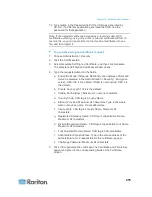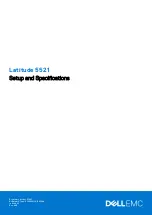
Chapter 15: Advanced Administration
261
Cluster Licenses
You can operate a CC-SG cluster using separate standalone licenses
with the same node capacity, or a cluster kit license.
Cluster licenses differ from standalone licenses in that they contain the
host IDs of both CC-SG units in the cluster. Only one set of licenses is
required to operate both CC-SG units in a cluster.
Cluster licenses must be added to the primary CC-SG unit. The license
is automatically copied onto the backup node when you create the
cluster.
When upgrading a CC-SG cluster to version 5.0 or higher, follow the
procedure for firmware upgrade to ensure that an identical set of licenses
is created on each CC-SG. See
Upgrading a Cluster
(on page 232).
Since each CC-SG in the cluster must be able to take over as primary,
they must have identical licensed node capacity at all times. Cluster kit
licenses automatically ensure this is the case since they are copied from
the primary onto the backup. When operating a cluster with standalone
licenses, this is enforced through a licensed node capacity check when
you join the cluster.
The backup’s host ID is checked when you join the cluster to ensure it is
consistent with the contents of the license files. If the host ID does not
match the license, the backup will be prevented from joining the cluster.
When initially creating a cluster using a cluster kit license, the primary
CC-SG will remain in a limited mode of operation until the backup has
joined the cluster successfully.
After the primary has entered the operational state, the cluster may be
temporarily deleted and then re-built as required to support maintenance
activity, such as firmware upgrades. The cluster must be recreated within
the 30 day grace period. A 30 day grace period is provided each time a
cluster is temporarily deleted.
















































